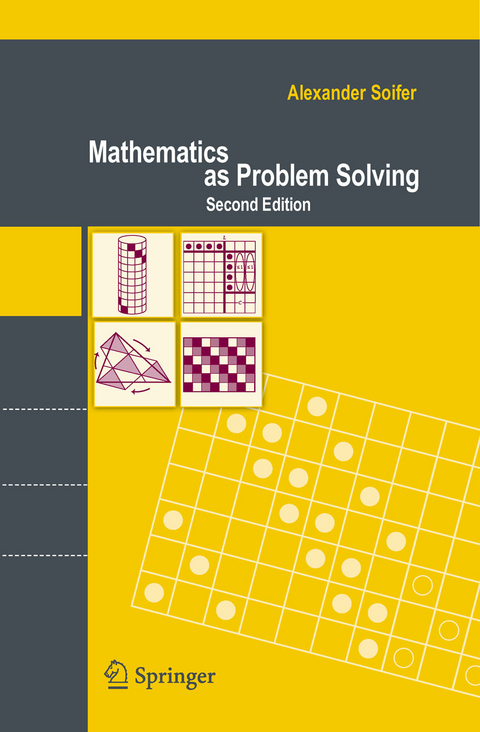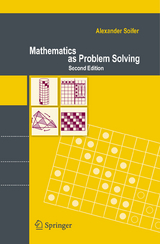Mathematics as Problem Solving
Seiten
2009
|
2nd ed. 2009
Springer-Verlag New York Inc.
978-0-387-74646-3 (ISBN)
Springer-Verlag New York Inc.
978-0-387-74646-3 (ISBN)
This book joins several other books available for the preparation of young scholars for a future that involves solving mathematical pr- lems. The introductory explanations and worked problems help guide the reader without turning the additional problems into rote repe- tions of the solved ones.
This book joins several other books available for the preparation of young scholars for a future that involves solving mathematical pr- lems. This training not only increases their ?tness in competitions, but may also help them in other endeavors they may engage in the future. The book is a diversi?ed collection of problems from all areas of high school mathematics, and is written in a lively and engaging way. The introductory explanations and worked problems help guide the reader without turning the additional problems into rote repe- tions of the solved ones. The book should become an essential tool in the armamentarium of faculty involved with training future competitors. Branko Grunbaum ¨ Professor of Mathematics University of Washington June 2008, Seattle, Washington Foreword This was the ?rst of Alexander Soifer’s books, I think, preceding How Does One Cut a Triangle? by a few years. It is short on anecdote and reminiscence, but there is charm in its youthful brusqueness and let- get-right-to-business muscularity. And, mainly, there is a huge lode of problems, very good ones worked out and very good ones left to the reader to work out.
This book joins several other books available for the preparation of young scholars for a future that involves solving mathematical pr- lems. This training not only increases their ?tness in competitions, but may also help them in other endeavors they may engage in the future. The book is a diversi?ed collection of problems from all areas of high school mathematics, and is written in a lively and engaging way. The introductory explanations and worked problems help guide the reader without turning the additional problems into rote repe- tions of the solved ones. The book should become an essential tool in the armamentarium of faculty involved with training future competitors. Branko Grunbaum ¨ Professor of Mathematics University of Washington June 2008, Seattle, Washington Foreword This was the ?rst of Alexander Soifer’s books, I think, preceding How Does One Cut a Triangle? by a few years. It is short on anecdote and reminiscence, but there is charm in its youthful brusqueness and let- get-right-to-business muscularity. And, mainly, there is a huge lode of problems, very good ones worked out and very good ones left to the reader to work out.
Language and Some Celebrated Ideas.- Numbers.- Algebra.- Geometry.- Combinatorial Problems.- Chess 7 × 7.- Farewell to the Reader.
| Zusatzinfo | XVIII, 106 p. |
|---|---|
| Verlagsort | New York, NY |
| Sprache | englisch |
| Maße | 155 x 235 mm |
| Themenwelt | Mathematik / Informatik ► Mathematik ► Algebra |
| Mathematik / Informatik ► Mathematik ► Geometrie / Topologie | |
| Mathematik / Informatik ► Mathematik ► Graphentheorie | |
| ISBN-10 | 0-387-74646-3 / 0387746463 |
| ISBN-13 | 978-0-387-74646-3 / 9780387746463 |
| Zustand | Neuware |
| Haben Sie eine Frage zum Produkt? |
Mehr entdecken
aus dem Bereich
aus dem Bereich
Buch | Softcover (2022)
Springer Spektrum (Verlag)
CHF 55,95




